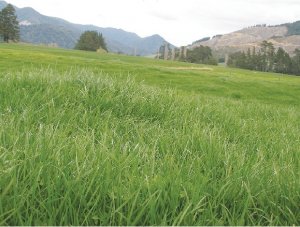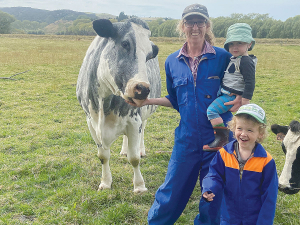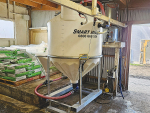Some pastures performed well despite the conditions, the DairyNZ Farmers Forum heard.
Each pasture persistence competition winner, for example, had new pastures performing well 5-8 years after sowing, AgResearch senior scientist Tom Fraser and Dairy NZ farm systems specialist Chris Glassey said in the presentation “Pasture persistence – what’s working”.
The workshop heard mean rainfall in the 2004 to 2010 summers and early autumn was 17% lower than the average at Ruakura near Hamilton.
Insect pest outbreaks such as black beetle were more common and the AR1 endophyte, used for a high proportion of pasture renewal during this period, was susceptible.
With the upper North Island a potentially a hostile environment for ryegrass and white clover to thrive, lessons learnt showed following protocols will reduce the risk during establishment.
Endophyte selection
The most appropriate endophyte for eachsituation depends on the level of insect challenge in that region. Tables 2 and 3 in the DairyNZ Pasture Renewal Guide (dairynz.co.nz/pasturerenewal) provide a summary of the expected insect protection from the range of endophytes available for diploid and tetraploid ryegrasses.
Planning
Identify under-performing paddocks from farm walk records, cow grazing days, or daily milk in vat.
Use the DairyNZ Pasture Condition Scoring tool (see dairynz.co.nz/pasturerenewal) to assess the status of each paddock. This allows you to build a time sequence for renewal. Identifying paddocks for renewal up to two years out allows times to fix drainage and soil compaction through cropping. Drainage and contouring are hard to fit in the narrow windows of opportunity each autumn and spring.
A lead-in time of 12 months or more gives more flexibility.
Do a soil test before renewal and correct any nutrient deficiencies
White clover establishment
Drill ryegrass using the drill’s main-seed box. Drop white clover seed onto the soil surface from the smallseeds box in front of the coulters sowing the ryegrass.
Alternatively clover seed can be broadcast before covering seed with about 5 mm of soil using a brush or bar harrow. Sowing ryegrass and white clover seed in the same coulter results in poor white clover establishment. Clover, should be sown at less than 10mm.
Cultivation before drilling or sowing after a crop is the most expensive option; however, it allows for incorporation of lime and provides better conditions for establishing white clover.
Cultivation also reduces deep soil compaction, disrupts insect populations and improves weed control.
Use certified seed
All certified seed is tested for germination and purity. Always request a copy of the seed analysis certificate. Ryegrass seed infected with a particular endophyte will also have an endophyte viability test. The endophyte level must be 70% or greater, meaning 70% of the seeds contain endophyte. This information is printed near the bottom of the seed analysis certificate.
Weed control early in a pasture’s life is preferable as small weeds are easier to kill.
Grazing management
New pastures require special management in Year 1. The aim is to improve seedling size before summer.
Graze for the first time when new seedlings cannot be pulled out by hand, usually five to seven weeks after drilling. Replacement heifers (if available) are preferred but cows for 1-2 hours are also suitable
Graze regularly (e.g. when pasture height reaches 10-15 cm), leaving a 4 cm stubble during the winter/ spring following drilling.
As summer develops reduce grazing frequency
Ryegrass pastures in the upper North Island face multiple stresses in summer such as moisture deficits, high temperatures and insect pests. Appropriate grazing management can reduce the impact
Don’t graze new pastures severely (below 4 cm) in the first summer. Repeated grazings below this level for older pastures will not help persistence either.
See dairynz.co.nz/pasturerenewal.








